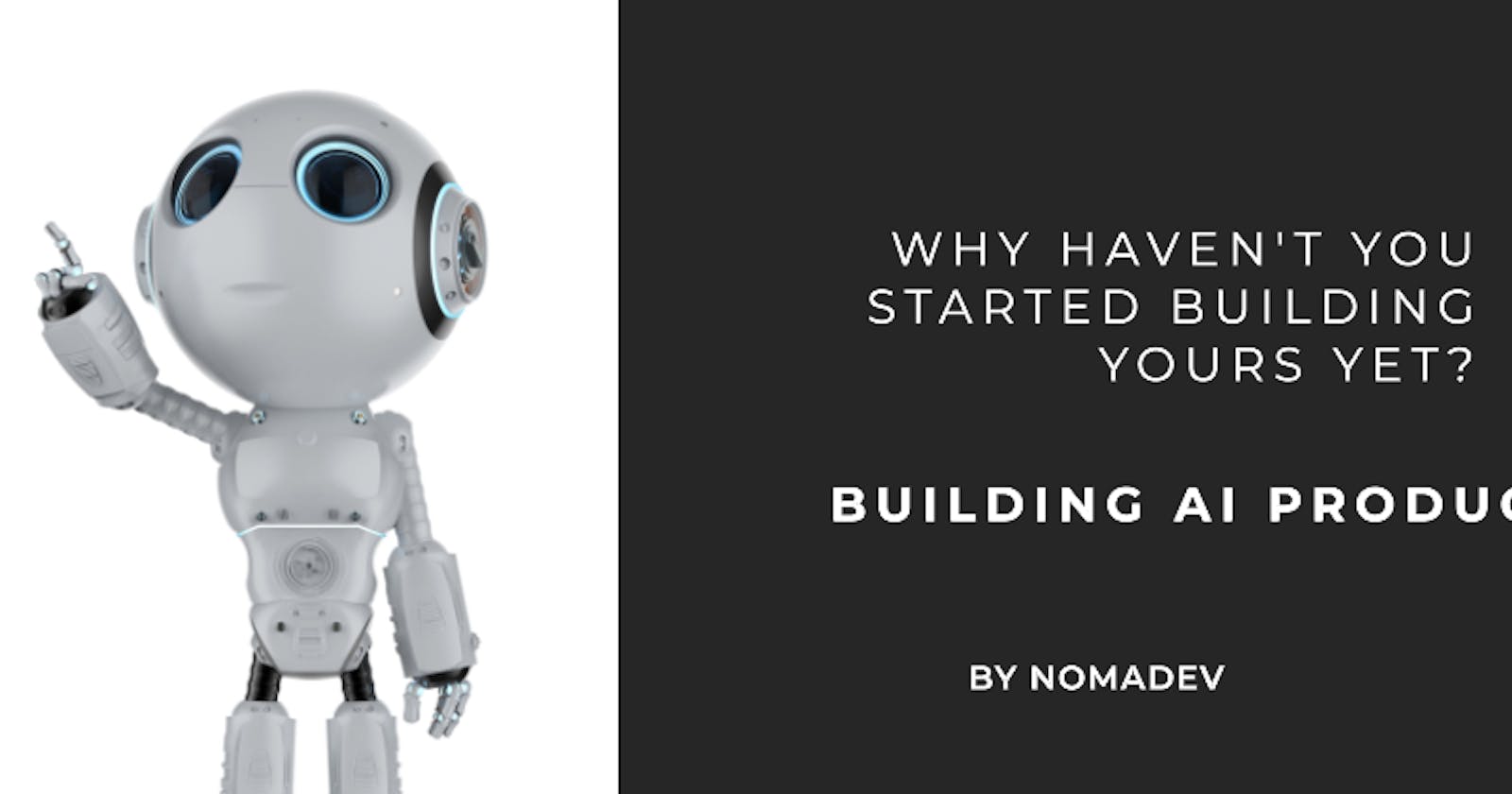🚀 AI is no longer a fancy buzzword. It's a reality that's transforming industries and our daily lives. From personalized recommendations on Netflix to voice assistants like Siri and Alexa, AI is everywhere. And the best part? It's accessible to everyone, not just tech giants and AI researchers.
Building an AI product can help you solve complex problems, automate tasks, and deliver personalized experiences. Plus, it's a great way to learn and apply AI concepts. So, why not give it a shot?

The Roadmap to Building AI Products
Building an AI product is not as daunting as it may seem. It's a journey that requires a clear roadmap, a good understanding of AI, and a lot of determination. Here's a simple roadmap to get you started:
1️⃣ Idea: Everything starts with an idea. Identify a problem that can be solved with AI. This could be anything from predicting customer behavior to automating repetitive tasks. The key is to find a problem that is significant and that AI can solve effectively.
2️⃣ Research: Understand the problem, the market, and the existing solutions. This involves studying your target audience, analyzing the competition, and keeping up with the latest trends in AI. The more you know about your market and your problem, the better your solution will be.
3️⃣ Planning: Define your product's features, design, and technology stack. This is where you decide what your product will do, how it will look, and what technologies you will use to build it. It's important to be realistic and to prioritize the most important features.
4️⃣ Development: Start building your product with a team of skilled developers. This involves coding, testing, and iterating on your product until it meets your quality standards. Remember, building an AI product is a team effort, and it requires a diverse set of skills.
5️⃣ Testing: Test your product to ensure it works as expected. This involves running various tests to identify and fix bugs, and to ensure that your product delivers a great user experience. Testing is a crucial step in the development process, and it should never be skipped.
6️⃣ Deployment: Launch your product to the market. This involves marketing your product, getting user feedback, and making necessary adjustments. Remember, launching a product is just the beginning. You need to keep improving your product based on user feedback and market trends.
7️⃣ Maintenance: Keep improving your product based on user feedback. This involves fixing bugs, adding new features, and improving the user experience. Maintenance is an ongoing process, and it's crucial for the success of your product.

The AI Development Process
The process of developing an AI product is a bit different from traditional software development. It involves a few extra steps that are specific to AI. Here's a simplified view of the AI development process:
1️⃣ Understanding AI: Before you start, you need to understand what AI is and how it works. This involves studying the basics of AI, machine learning, and deep learning. The better you understand AI, the better your product will be.
2️⃣ Identifying Problem: Identify a problem that can be solved with AI. This involves understanding your users' needs, studying your market, and finding a problem that AI can solve effectively.
3️⃣ Data Collection: Collect and preprocess the data needed to train your AI model. This involves gathering data from various sources, cleaning the data, and preparing it for training. Remember, the quality of your data directly affects the performance of your AI model.
4️⃣ Model Selection: Choose the right AI model for your problem. This involves studying different AI models, understanding their
strengths and weaknesses, and choosing the one that best fits your problem and your data.
5️⃣ Training: Train your AI model using your data. This involves feeding your data to the model, adjusting the model's parameters, and iterating on the process until the model performs well. Training an AI model can be a time-consuming process, but it's crucial for the success of your product.
6️⃣ Evaluation: Evaluate the performance of your AI model. This involves testing your model on new data, measuring its performance, and making necessary adjustments. Evaluation is a crucial step in the AI development process, and it helps ensure that your model is ready for deployment.
7️⃣ Deployment: Deploy your AI model as part of your product. This involves integrating your model into your product, testing the integration, and launching your product to the market. Deployment is the final step in the AI development process, and it's where your efforts finally pay off.

The Future of AI Products
The future of AI products is bright. With advancements in AI technologies, we can expect to see more innovative and useful AI products in the market. AI is transforming industries, from healthcare to finance to entertainment, and it's creating new opportunities for businesses and individuals alike.
If you're new to AI and want to stay updated on the latest trends and tools, make sure to follow me on Twitter @thenomadevel. I regularly share insightful threads and updates about the AI landscape. Here are a couple of my recent tweets that you might find interesting:
🚀 Buckle up! The AI revolution is here and ChatGPT is just the tip of the iceberg. In this thread, I introduce 5 insanely powerful AI extensions that are changing the game.
🌐 From a universe of 3000+ AI tools, here are 5 that are skyrocketing beyond the stratosphere! Unleashing the AI Titans: The Iceberg Beneath ChatGPT! Bookmark now, thank me later.
Remember, the world of AI is vast and constantly evolving. The key is to keep learning, experimenting, and building. Don't be afraid to dive in and start creating your own AI products. The future is here, and it's powered by AI! 🚀💡

